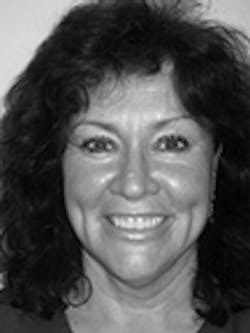Phenomenon: Advocating awareness
Periodontal Charting
Increasing the volume during probing also increases awareness
By Eileen Morrissey, RDH, MS
A hygienist I know (let’s call her Partima) works in a practice a half day a week, where she’s been employed for 18 months. The practice also has a full-time hygienist (let’s call her Fultima). Their doctor requests that all patients be comprehensively probed annually. Periodontal screening and recording (PSR) or general perusal of the tissues is performed at all other recare visits. The practice uses a software system that allows for periodontal charting; however, the numbers have to be keyed into the computer by the clinician or another party.
The front desk administrator makes herself available as needed to assist the hygienist, and Partima told me she takes full advantage of this offer to help. Conversely, Fultima probes and then keys in the numbers herself.
Partima told me about an interesting phenomenon. Anytime she sees a recall patient that has been seen previously by Fultima, something strange happens. After Partima performs the periodontal assessment, the patient asks her what function is taking place and for what reason? There’s no question that the documentation has taken place in the past, as the numbers are keyed in. What’s interesting is that the patient has no awareness that the periodontal recording has happened. (You’re probably wondering where I’m going with this.)
Hence the message of today’s column. While Fultima is totally responsible in that she is providing the mandatory periodontal charting, she is doing it silently. The problem with this protocol is that she loses the opportunity to communicate her message to the patient effectively. A significant number of her patients do not realize that periodontal assessment has taken place.
If you have the ability to provide comprehensive probing with results stated out loud—whether it’s recorded by machine or human—I applaud you for instituting the Mercedes of periodontal exams. In my office, I probe without assistance. Later I will share how I compensate for that limitation.
When probing depths are reported to someone who is keying the information into the computer, patients are forced to lie there and hear (for example), “4-2-3, 3-2-3, 5 with bleeding, 2-4,” and more. As soon as the procedure is completed, Partima is asked, “What can we do about the five with bleeding?” It is obvious that the patient heard the distinction between the varying pocket depths and bleeding points, and wants to know more. Now it becomes simple for the hygienist to treatment plan localized or quadrant periodontal debridement as needed, and case acceptance is almost guaranteed.
I understand this sounds like I’m talking to myself, but I’m also talking to the patients.
Periodontal recording performed aloud is extremely powerful because it results in increased patient awareness. Partima has started to build a significant following because patients feel that they’re receiving an additional service. This is unfortunate because Fultima probes, but no one knows she’s doing it. When Fultima tries to explain to a patient the need for follow-up debridement, it’s a tough sale.
The challenge for many RDHs is finding assistance with periodontal documentation. When I chart my patients, I do so without help because there is no one available. I explain when I start that I will be assessing the gingival tissues, and that I’m looking for sites that do not exceed 3 mm in measurement and do not bleed. I explain that as many as 192 measurements will be taken, and only significant ones will be recorded.
I explain further that I will state aloud and record only those probing depths that exceed 4 mm or higher, as well as all bleeding points. This is a compromise. It may not be as powerful as calling out every reading, but it can work effectively because patients still hear important information. I understand this sounds like I’m talking to myself, but I’m also talking to the patients. It also shortens the follow-up discussion we have about the treatment plans.
Diagnosis and treatment of periodontal disease allows for a healthy periodontium, which is integral to comprehensive care and the achievement of optimum oral health. It is the standard of care. Without a periodontal diagnosis, there is potential liability, as well as a missed opportunity to treat the disease.
I did not write about the various voice recognition systems or ancillary charting tools that enable documentation and allow patients to listen to findings. There are many good ones available, but that’s an article for another day. Also, it is not my intent to undermine any hygienists who make the effort to assess disease in whatever way works for them and effectively communicate with their patients. I applaud them! Onward we go; it is in our hearts’ core.
EILEEN MORRISSEY,RDH, MS, is a practicing clinician, speaker, and writer. She is an adjunct dental hygiene faculty member at Rowan College at Burlington County. Eileen offers CE forums to doctors, hygienists, and their teams. Reach her at [email protected]. or 609-259-8008. Visit her website at www.eileenmorrissey.com .

